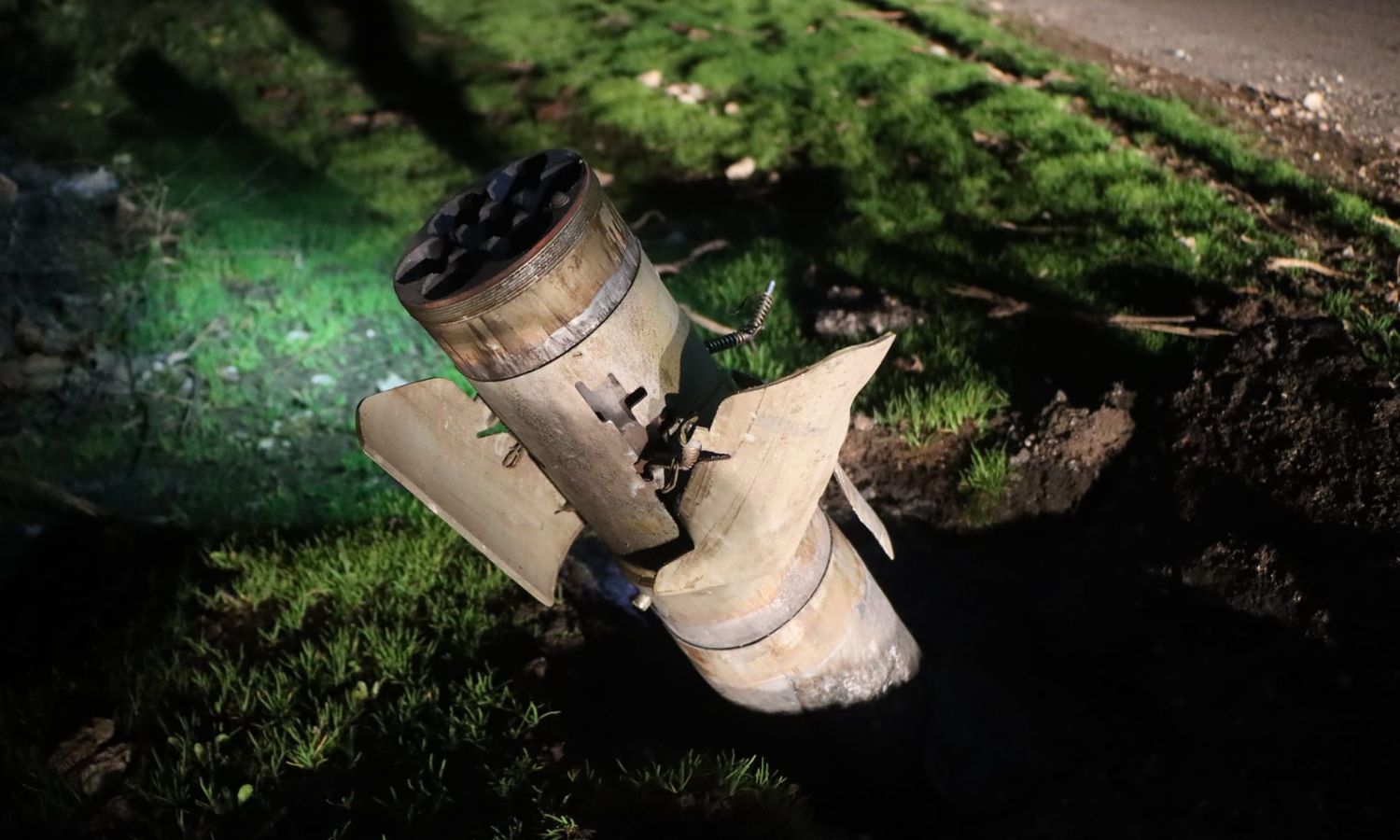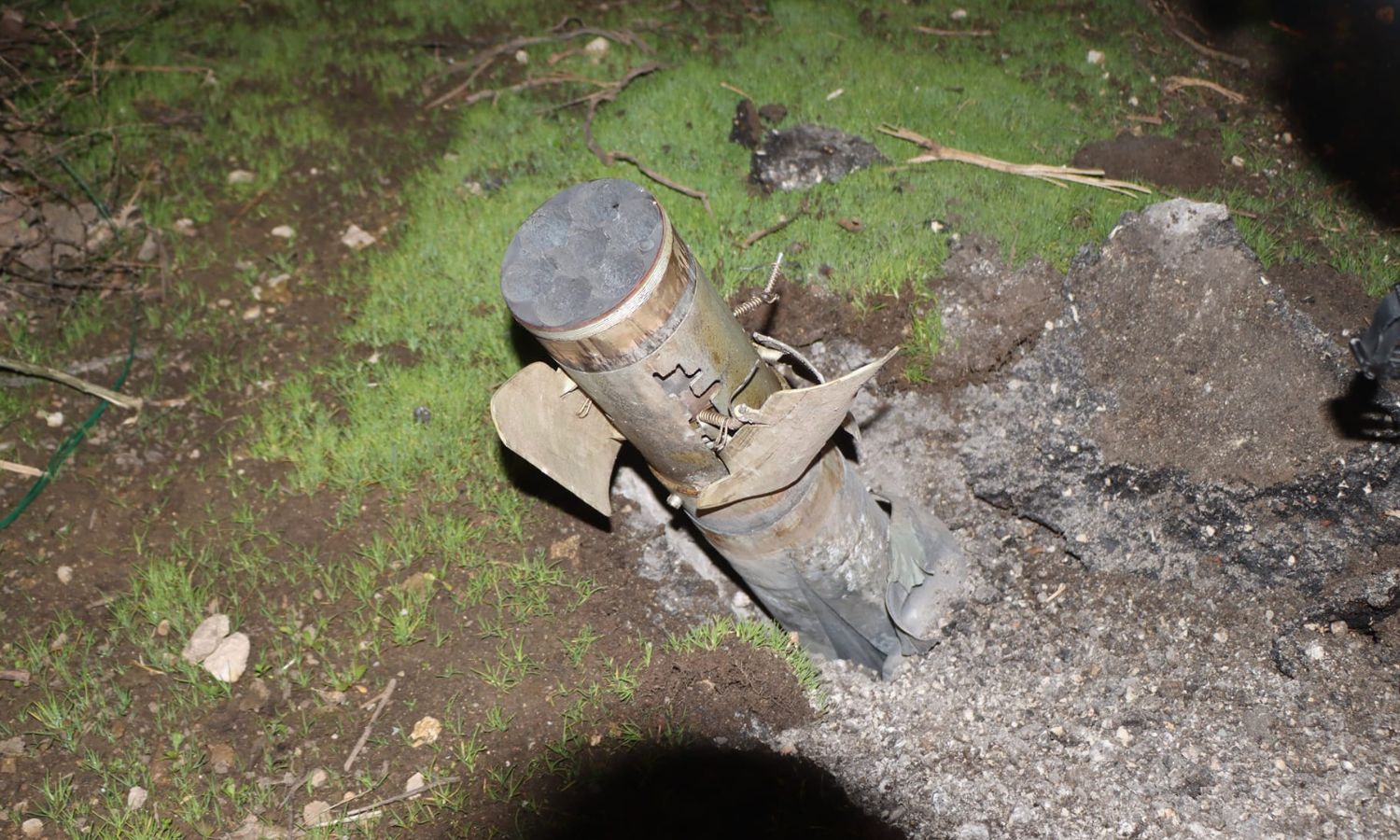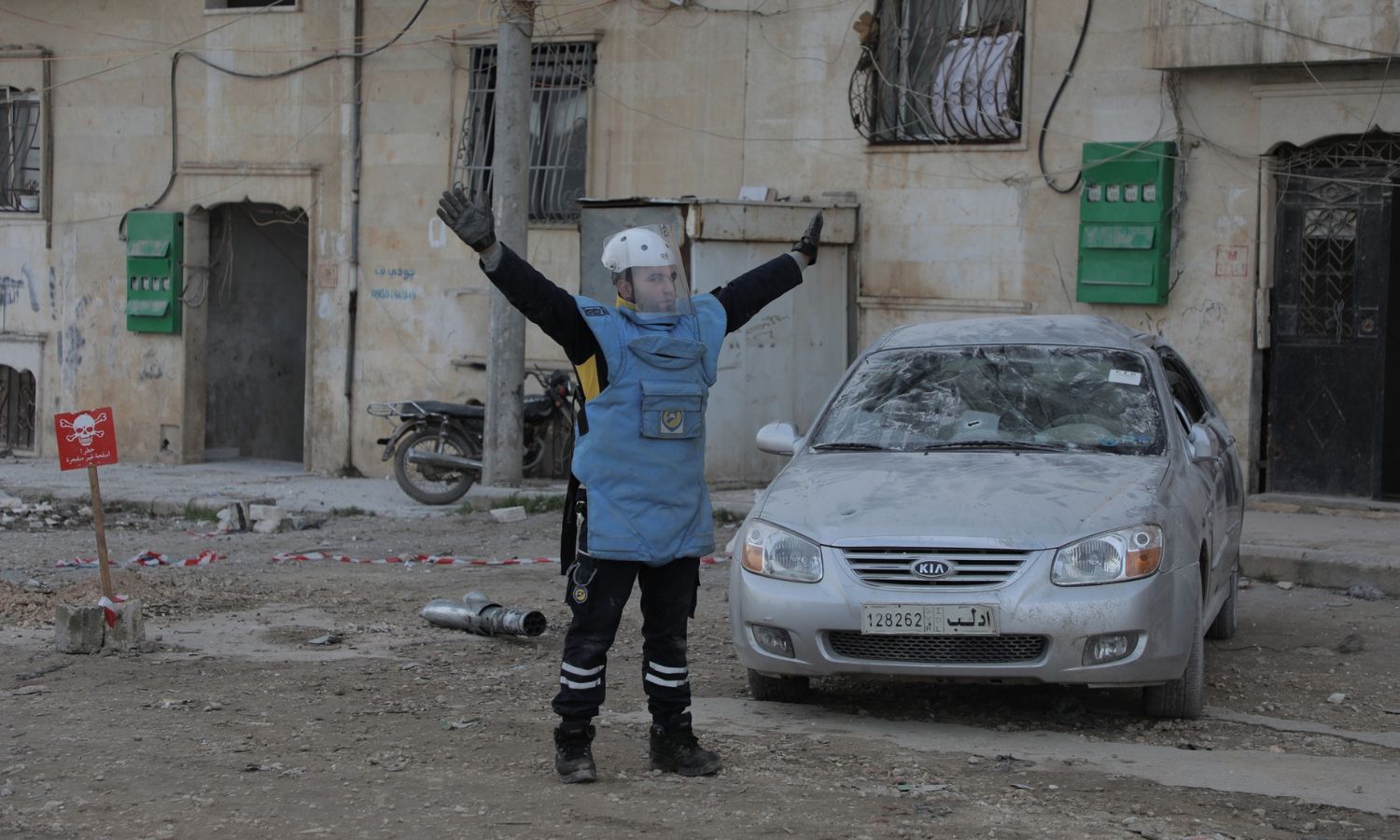



The Syrian regime forces used weapons carrying incendiary ammunition to target vital, densely populated areas in northern Syria over the past two days, resulting in casualties and property damage.
The Syria Civil Defence rescue agency documented in separate reports the use of submunition carriers containing incendiary ammunition of the “ML-5” type carried by the “9M22S” rocket, resulting in the death of a girl and the injury of 14 civilians, including critical cases, in less than 24 hours.
The targeting, on the 6th and 7th of January, encompassed the industrial area in Idlib and the eastern outskirts of the city, near the “Martyrs” camp for the displaced, a popular market, civilian homes, and near a high school in Sarmin, eastern Idlib countryside.
It is a Russian-made 122 mm caliber “Grad” rocket, carrying a warhead of the “9N510” type as a carrier for the incendiary ammunition “ML-5”, according to the Syria Civil Defence and the Cat-UXO website.
The rocket is launched by the multiple rocket launcher system “BM-21 Grad” and has a maximum range of about 20 kilometers.
The ammunition carried by the rocket consists of 180 non-explosive hexagonal incendiary elements of the “ML-5” type, which are hexagonal cups made of magnesium filled with a thermite mixture and packed in an array inside the warhead “9N510”, and the duration of the incendiary elements’ ignition is no less than two minutes.
The incendiary ammunition is designed to destroy human forces and equipment by causing mass fires, achieving direct hits, and is effective in both hot and cold weather.
Visual evidence shows that the incendiary ammunition flies in an arc, explodes in the air, and falls.

Remnants of rockets and submunition carriers containing incendiary weapons were used by the regime forces in their shelling of the eastern outskirts of the city of Idlib – January 6, 2024 (Syria Civil Defence)
In Syria, the Human Rights Watch (HRW) organization documented more than 120 incidents of incendiary weapon targeting from 2012 to 2018 by the Syrian regime forces and their Russian ally, occurring in six governorates, including Aleppo, Damascus, Rif Dimashq, Daraa, Hama, and Idlib.
The organization considered incendiary weapons to be among the cruelest in contemporary armed conflicts, as they produce heat and fire through the chemical reaction of flammable substances, causing immediate and lifelong human suffering in addition to the destruction of homes and other civilian infrastructure.
Over the past 15 years, the HRW has documented the use of incendiary weapons in Afghanistan, Gaza, Iraq, Syria, Ukraine, and Yemen and mentioned that both Russia and Ukraine possess incendiary weapons and have used them in previous conflicts.

Damage resulting from the shelling of the regime forces on the eastern outskirts of Idlib city with rockets and submunition carriers containing incendiary ammunition – January 6, 2024 (Syria Civil Defence)
Incendiary weapons cause severe burns, sometimes reaching the bones, and can damage the respiratory system, cause infections, shock, and organ damage.
Over time, wide scarring leads to tightening of muscle tissues and physical disabilities. The shock resulting from the attack, the painful treatment that follows, and the disfiguring scars lead to psychological harm and social exclusion.
The shortcomings in available healthcare in conflict areas exacerbate the already difficult process of treating serious burns. Long-term disabilities, medical care costs, and loss of property associated with incendiary weapons have negative social and economic implications.
Every time northwestern Syria is targeted with incendiary materials, the Syria Civil Defence team reiterates its advice and recommendations on how to act and deal with this type of targeting, whether before or during the attack.
Recommendations prior to being targeted with incendiary weapons include:
In the event of being targeted with incendiary materials, the Civil Defence recommends:
Incendiary weapons are subject to the Third Protocol annexed to the Convention on Certain Conventional Weapons of 1980, which seeks to protect civilians and civilian objects by regulating the use of incendiary weapons in concentrations of civilians and in forests and other types of vegetation cover.
The Third Protocol prohibits the use of incendiary weapons dropped from the air in populated areas but allows the use of ground-to-ground weapons under certain conditions.
The Human Rights Watch criticized the Third Protocol because all incendiary weapons cause the same kind of harm regardless of their delivery mechanism, adding that a complete ban on incendiary weapons would have greater humanitarian benefits.
The organization mentioned that the drafters of the Third Protocol focused on regulating incendiary weapons that are most concerning at the time of negotiation, those that are dropped from the air and designed specifically for burning and igniting fires, especially those containing “napalm,” considering that this narrow scope is a legacy of the seventies and is no longer suitable today.
if you think the article contain wrong information or you have additional details Send Correction